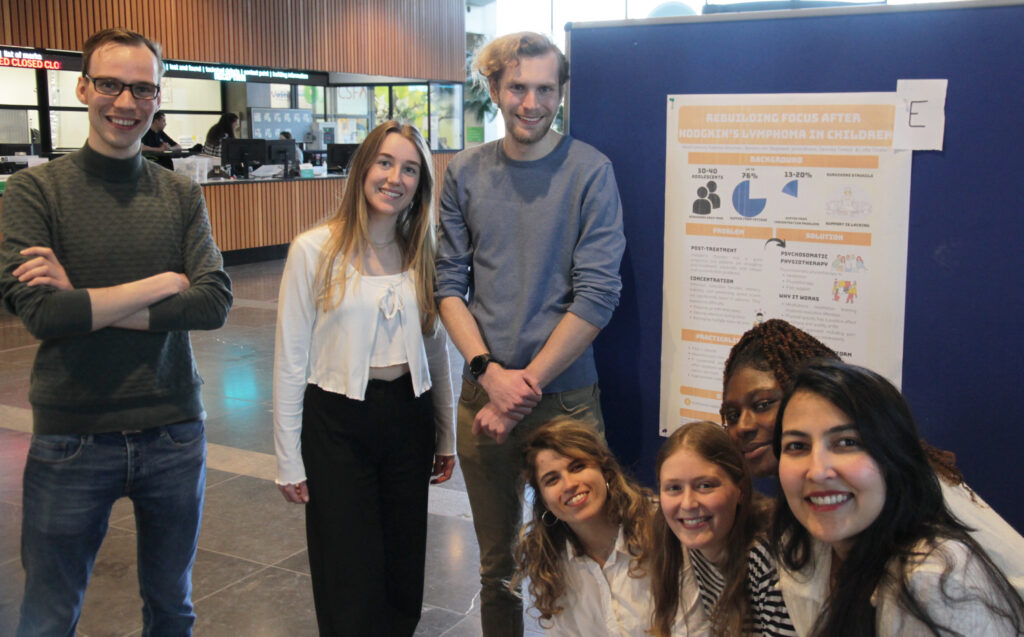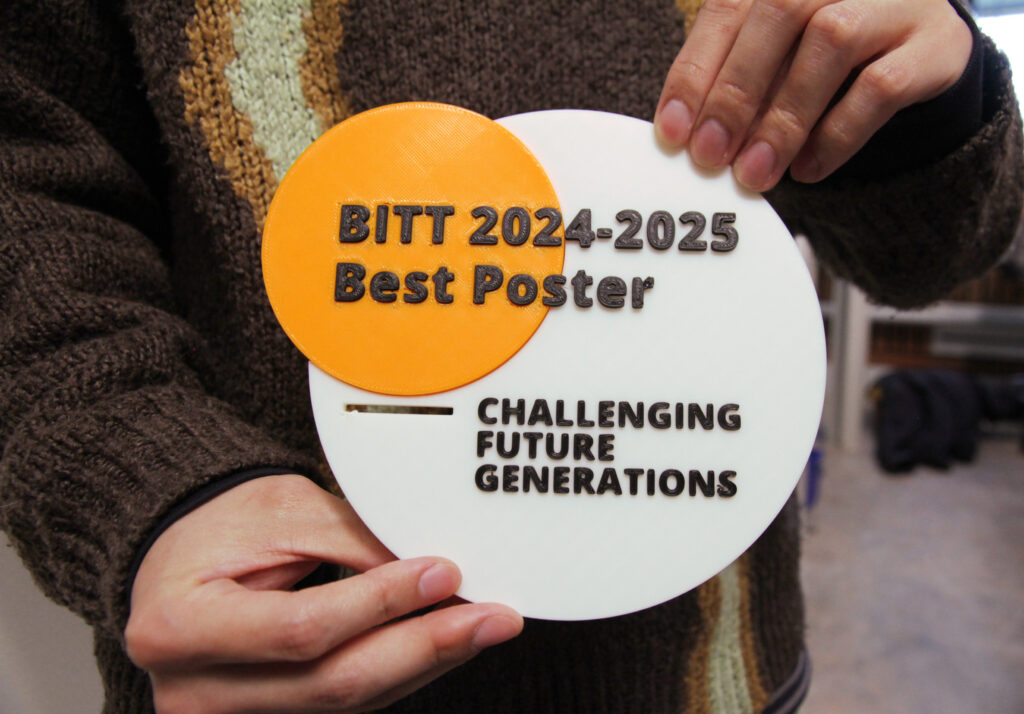The BITT Challenge concluded on March 27th, bringing together nearly 100 students for engaging poster presentations and pitches. Several students and tutors shared their experiences in interviews, offering insights into the challenge. Here’s a look back at some highlights.
Working on a Real Patient Case
During the Bio-Tech-Med Nutrition Interdisciplinary Team Training—better known as the BITT Challenge—students from the EWUU alliance (TU/e, WUR, UU, and UMCU) came together to tackle a real-life patient case. Participants included students from Biomedical Engineering at TU/e, Nutrition and Health at WUR, Biomedical Sciences at UU, and the SUMMA program at UMCU. As part of their master’s curriculum, they can choose to take on this challenge.
Each case centers on a nutritional, medical, or technical issue—or a combination of these. For example, one group worked on a case involving a patient with post-COVID syndrome. They came up with a personalized supplement system that delivers the right supplements to your door based on your blood test results.

A Real Challenge for Both Students and Teachers
One of the unique aspects of this challenge lies in the fact that students from different backgrounds must merge their perspectives into a single solution. Fairuz Rabbani, WUR student of Nutrition and Health, notes that you can become insensitive to other opinions when living in a bubble with people from the same background. You might hear other viewpoints but not make the effort to truly understand them. When working together during BITT, you are forced to learn to understand each other in order to move forward. Fortunately, everyone in her group felt comfortable expressing when they didn’t understand something, which was a valuable learning experience. Nikol, another WUR student in Nutrition and Health, agrees that learning to understand people from different backgrounds will be important in future professional life. The transdisciplinary collaboration is not only a challenge for the students but also for the guiding tutors. According to tutor Joris Jaspers, the art lies in guiding the project in such a way that every discipline is represented in the final result.
Learning—But Not From Books
Students in BITT collaborate using “challenge-based learning.” This method is not necessarily second nature to all students. Fairuz shares that she found it overwhelming at first not to have a set schedule of lectures, but instead to be in charge of her own progress. “As the project progressed, I got better at planning and even enjoyed setting my own pace,” Fairuz says. “Of course, you still have to meet the deadlines,” she adds with a laugh. Facing a real patient is also a new experience for some students. “A real-life case is much more motivating than a fictional story on paper,” tutor Richard Horenberg points out.
All in all, the fifth consecutive edition of the BITT Challenge was once again a success—thanks to everyone involved. On to new, inspiring collaborations next year!

Click here for more information about the BITT challenge